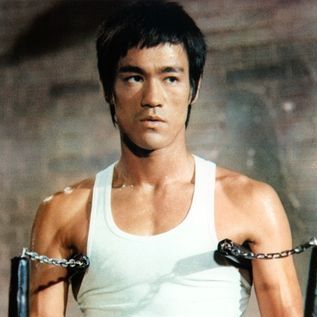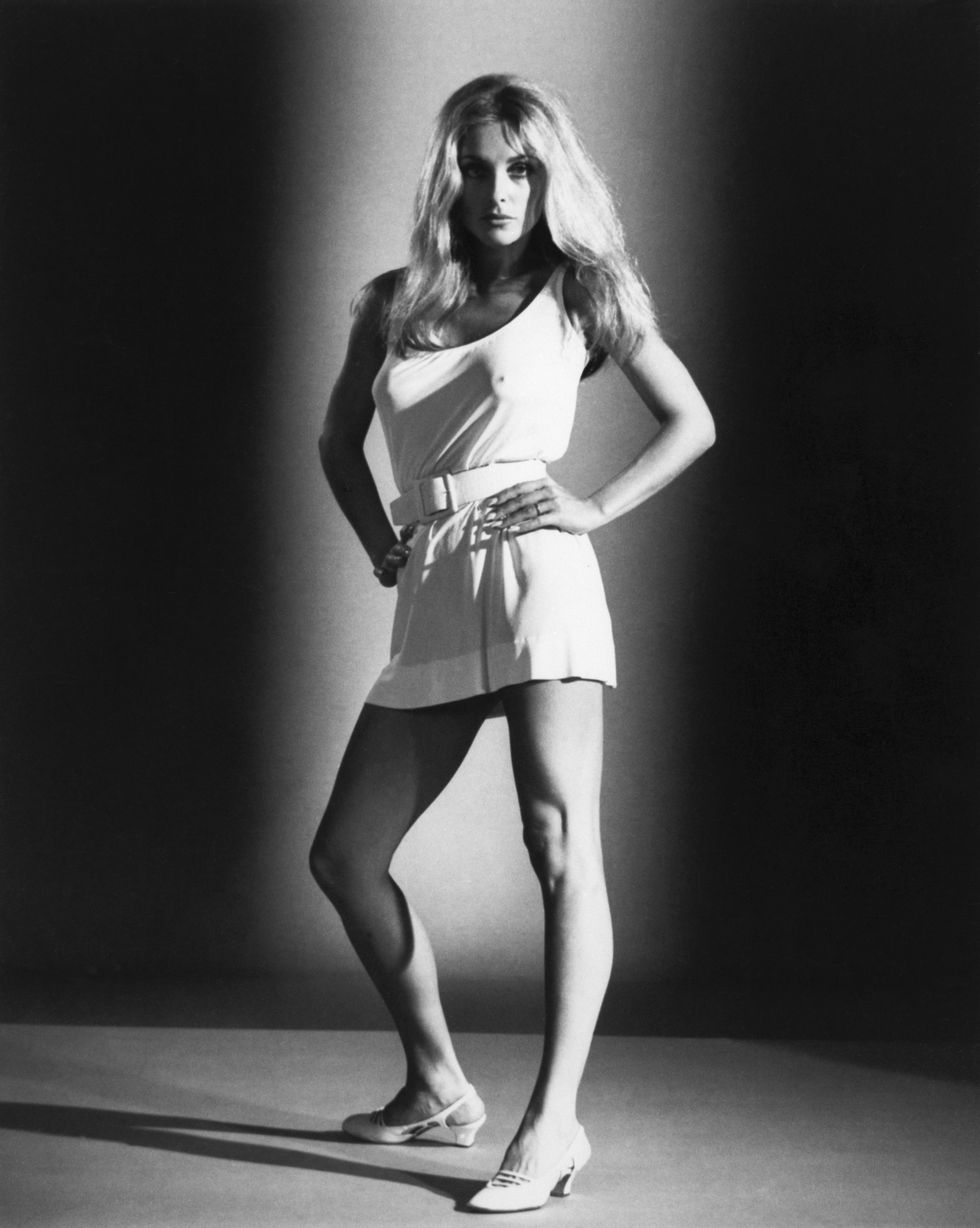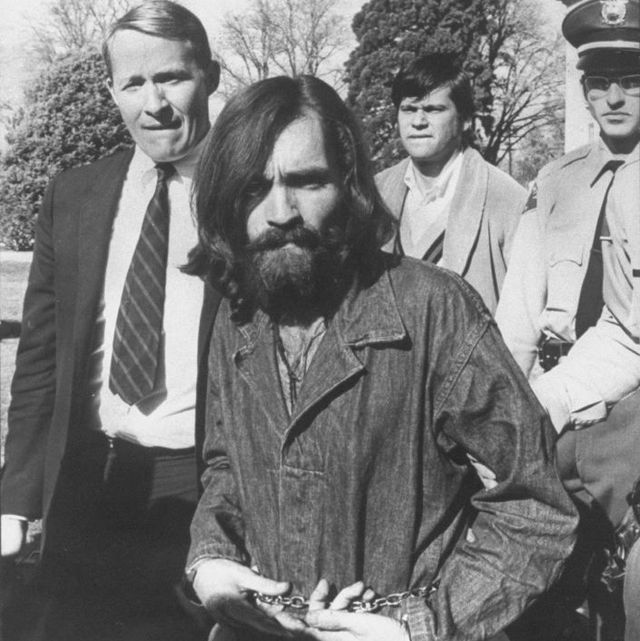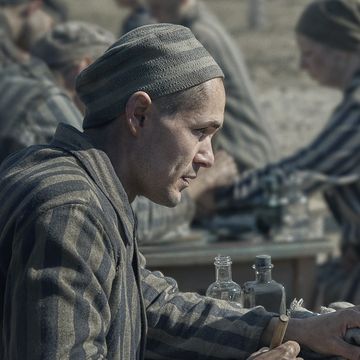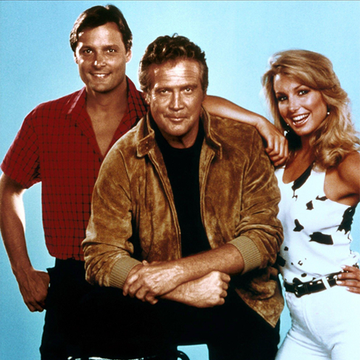In 1969, after the brutal killings of five people, including actress Sharon Tate, at a Benedict Canyon home north of Beverly Hills, the police found a pair of horn-rimmed glasses they believed could belong to the killer.
Roman Polanski was in London when he found out about the murder of Tate, who he was married to at the time. After he returned to the U.S., the crime remained unsolved for months—and Polanski became obsessed with it. After learning about the glasses at the crime scene, he bought a Vigor lens-measuring gauge, he explains in his memoir Roman by Polanski, which he hoped could help aid in the investigation.
And he continued to take self-defence classes with his friend, actor and martial artist Bruce Lee, who was charging nearly $1,000 an hour for lessons at that time.
It was an off-hand comment during one of those sessions which led Polanski to incorrectly believe it could've been Lee who committed the mass murders—though it was, of course, the followers of Charles Manson who killed Tate and the others that night.
Lee's relationship with Tate is reexamined in Quentin Tarantino's Once Upon a Time in Hollywood. In the film, Lee, who is played by 35-year-old Mike Moh, has a brush with the Manson victims—but, in this case, truth is stranger than fiction.
Tate introduced Lee and Polanski in the 1960s. The actress met Lee on the set of The Wrecking Crew, when he taught karate to the cast. She hit it off with Lee, who at that point was just beginning to break into acting, and invited him over to have dinner with her and Polanski, telling her husband, “You two will get on like a house on fire.”
They did get on, and Polanski hired Lee as his personal Kung Fu instructor.
Not long after the couple formed a friendship with Lee, Tate was mysteriously killed. Lee was living just a couple of valleys away from the home where the mass murders took place in August 1969. Along with Tate, Lee and Tate's friend, celebrity hair stylist Jay Sebring was killed that night. Sebring was one of Lee's closest friends, and the one who helped him break into Hollywood, Lee's biographer, Matthew Polly, told me in an interview this week.
In the Once Upon a Time, Tarantino shows Lee training with Sebring just hours before the murder takes place. In reality, there was only a rumour that Lee went over to Benedict Canyon the day of the murders, but his biographer says there's no evidence that happened. Lee's widow, Linda Lee, told Polly she has no recollection of Lee going to the house or seeing the victims that day, and the diary in which Lee kept a log of who he was training shows he wasn't training Sebring during that time, either.
What really happened sounds even more far-fetched, though.
Several months after the murders, Lee mentioned to Polanski during a Kung Fu lesson that he'd recently misplaced his glasses. Polanski immediately recalled the glasses found near Tate's body at the crime scene.
"I never liked your old pair anyway," Polanski told Lee, according to Polly. "After class, why don't I drive you to my optician's and buy you a new frame as a gift."
"Bruce was the only person [Polanski] knew personally who had the physical skills to hurt a bunch of people at once," Polly tells me. "Bruce was the toughest guy he knew, and Bruce knew weapons."
When Lee told the optician his prescription, Polanski realized his suspicion was unfounded. He never told Lee he suspected him. And he never publicly admitted it until he recounted it in his memoir, which came out in 1985, more than a decade after Lee's death.
Lee's widow, Linda, was amused by the absurd accusation when she read about it in Polanski's book, according to Polly, who interviewed her for Bruce Lee: A Life.
Polly says Tarantino's manager requested a copy of his book, which includes the story about Polanski's suspicion. Moh, the actor playing Lee, read the biography, as well. But it's clear from the film that Tarantino took artistic license with the story.
I reached out to Lee's family to see what they think about Lee's appearance in Tarantino's new film, but they didn't return my request to comment. His daughter Shannon Lee, however, told Deadline earlier this year when the cast was announced, “With Tarantino’s film, to not have been included in any kind of way, when I know that he reached out to other people but did not reach out to me, there’s a level of annoyance — and there’s part of me that says this is not worth my time and my energy.
"Let’s just see how the universe deals with this one.”
Tarantino told Deadline he didn't contact Polanski before writing the film, either. But Polanski reached out through a friend.
"After it was finished, he got wind of it and he reached out through a mutual friend. That friend called me and said, so what’s up with this? He said that Roman wasn’t mad. He didn’t call up irate or anything. He was just curious. What is this?" Tarantino said. "So what I did was…Roman’s obviously stuck in Europe. I had the friend come over and read the script. He came to my house. He read the script simply so he could call Roman up and tell him the idea and what’s in it. And basically that he didn’t have anything to worry about."
Polanski is "stuck in Europe" because, in 1977, a grand jury indicted Polanski on six felony charges, including rape, furnishing a controlled substance to a minor and sodomy. He later pleaded guilty to unlawful sexual intercourse with a minor, then fled the United States on the eve of his sentencing. He's remained in Europe ever since.
Though he wasn't at the house that day, as the film portrays, Lee was deeply affected by the deaths of Tate and Sebring.
"When he wrote the screenplay The Silent Flute, it had a level of violence in it which was extreme even for that era. You could feel the murders behind it influencing it," Polly says. "And when he moved to Hong Kong and became super famous himself, everyone noted that he seemed paranoid. His children never left the house without a minder, and he went around with security guards, which was unusual at that time.
"I think that he forever after had an extra level of fear associated with being famous."

Kate Storey is the author of White House by the Sea: A Century of the Kennedys at Hyannis Port and the senior features editor at Rolling Stone. She was previously a staff writer at Esquire, where she covered culture and politics, and has written long-form profiles and narrative features for Vanity Fair, Marie Claire, Town & Country, and other publications.
